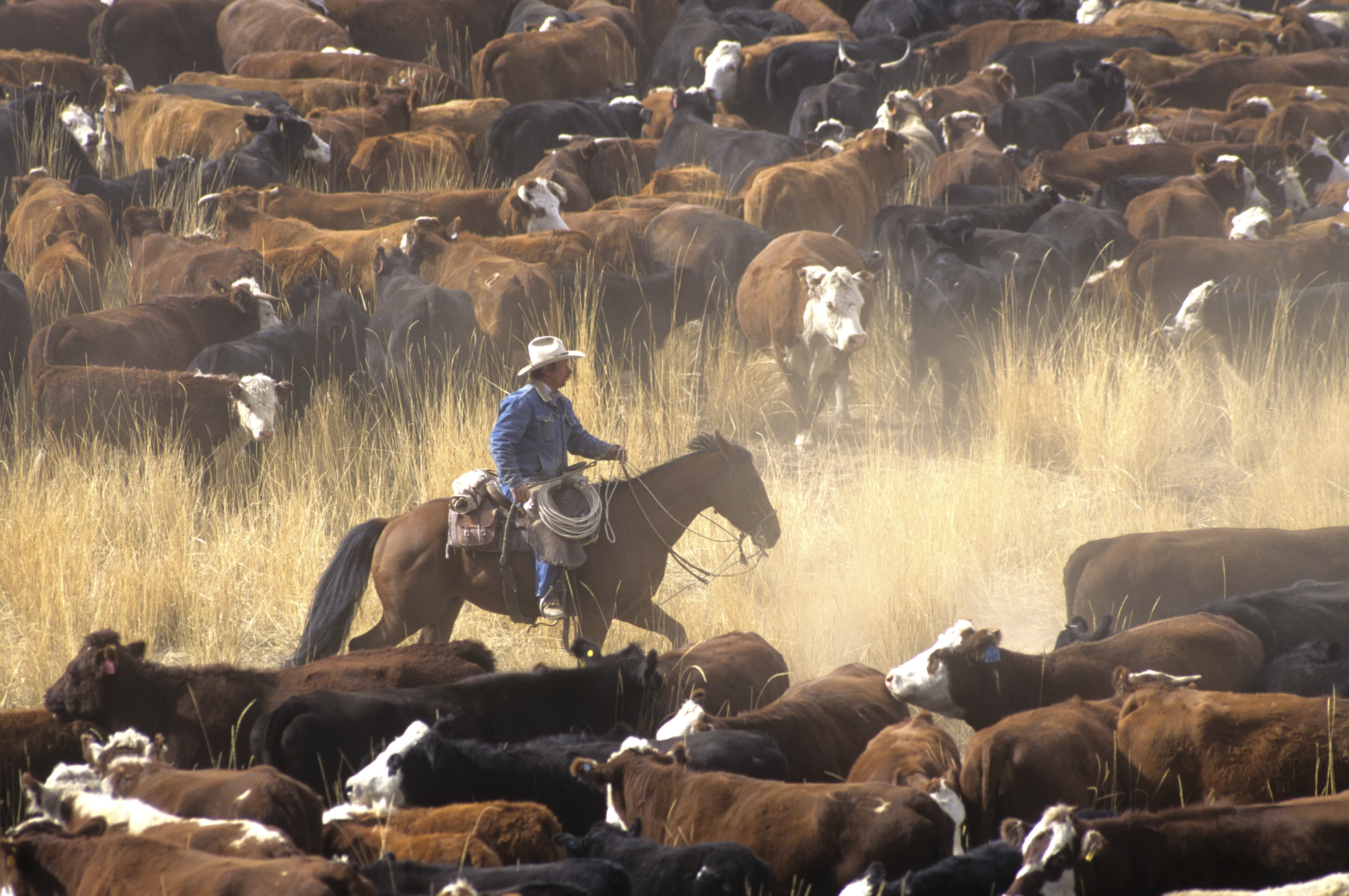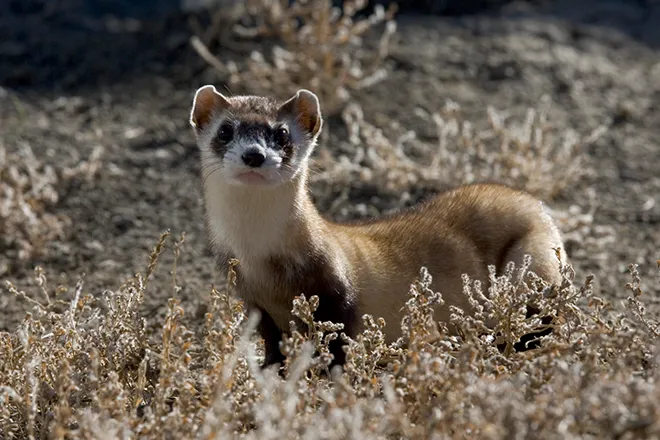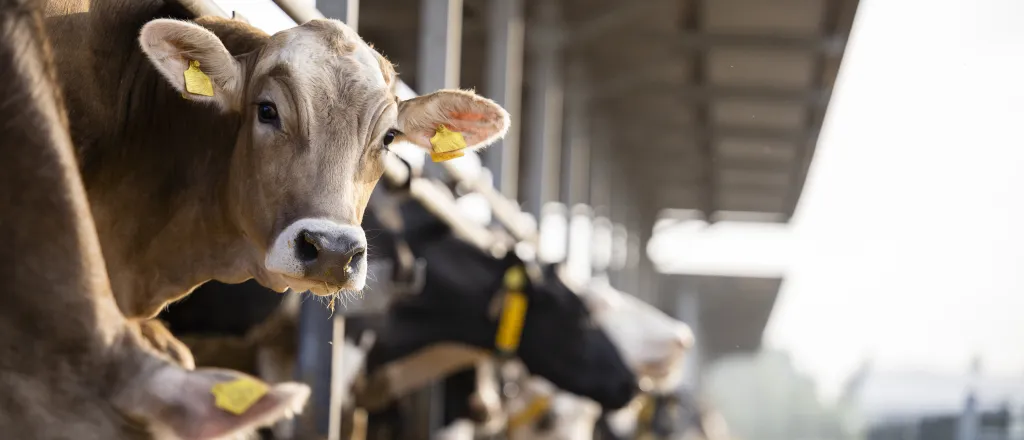
Research: Probiotics on farms could fight antibiotic resistance
© Smederevac - iStock-1470677566
Click play to listen to an abbreviated version of this article.
(Arizona News Connection) Antimicrobial resistance is one of the largest health threats to humanity, according to the World Health Organization. It's been over 40 years since the discovery of a new antibiotic class; an ominous gap in modern medicine given the rise of superbugs and antibiotic-resistant bacteria. The spread and severity of antibiotic resistance is exacerbated by antibiotic overuse and lax prescribing standards, but also by animal agriculture. Depending on the country, roughly 70 percent of all antibiotics produced are used in agriculture to prevent disease, or enhance animal growth. This overuse not only fosters the spread of antibiotic-resistant bacteria in animals, but in humans who consume that meat.
At a critical meeting last month, the United Nations made a global pledge to reduce deaths from antibiotic resistance, which includes clamping down on antibiotic use in animal farming. Sentient's recent investigation in collaboration with The Bureau of Investigative Journalism found that Cargill routinely uses critically important antibiotics in livestock, despite rules from the FDA and warnings from the WHO.
It's clear that farmers need to reduce their dependence on antibiotics. But a complete ban would be a naive solution, says Jennifer Ronholm, Canada's research chair in agricultural microbiology and professor at McGill University. Ronholm argues a ban could result in food shortages and an uptick in livestock diseases. That's why her lab aims to uncover whether they can design and optimize animal microbiomes to lessen the need for antibiotic use in agriculture.
How Farming Practices Lead to Antibiotic Resistance
A lot of the pathogens we're seeing with high drug resistance originate from animals. Since the 1940s, roughly 50 percent of zoonotic diseases have been traced back to agriculture. "They're circulating in agriculture environments, picking up the [antibiotic resistance] genes and then circulating back to humans. So, figuring out a way to cut that zoonotic transfer feels like a really effective way to deal with the problem," Ronholm tells Sentient.

© iStock - Pashalgnatov
To prevent the emergence of zoonotic diseases, a 2022 paper called for reducing meat consumption to alleviate animal confinement on farms, and also to avoid clearing more land for agriculture. The paper's author, Matthew Hayek, described animal agriculture as a "trap of rising infectious diseases," and urged that escaping this trap means "limiting meat consumption."
Poor conditions on farms - such as cramped facilities and poor ventilation - can exacerbate the spread of antibiotic resistance. Recent estimates found 1.7 billion animals in the U.S. live on factory farms, up nearly 50 percent since 20 years ago, in response to growing demand for animal products. Further, factory farms produce twice as much sewage as the country's population. These confined conditions can create physical and mental stress for the animals, which may lead to weakened immune systems, making them more susceptible to infection. This, in tandem with the farm's high amounts of waste, creates an optimal environment for disease spread.
A study looking at the effects of various pig farming conditions found lower levels of antibiotic resistance in organic and alternative farms than in conventional farms. The authors suggest the lower levels were from tighter regulation of antibiotic use, straw bedding and open ventilation.
Optimizing Animal Microbiomes to Prevent Disease
The premise of Ronholm's research ties into a key microbial concept of competitive exclusion, or simply, that particular healthy gut bacteria will outcompete harmful bacteria. By maintaining a balanced microbiome, this competition can prevent infection and disease from taking place.
At a recent presentation for World Antimicrobial Resistance Congress Week, Ronholm explained how her lab isolates these bacteria that competitively exclude infectious bacteria from healthy animals. The goal is then to create a tailored probiotic solution that optimizes animal's microbiome to lessen reliance on antibiotics for treatment.
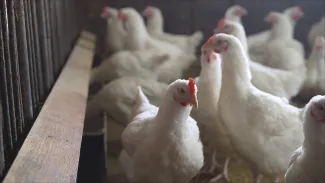
© Ruslan Sidorov - iStock-1197330374
Ronholm is particularly interested in mastitis infection, which is the most common disease in dairy cattle. Cows can get mastitis when bacteria infect their udder from the process of milking, dirty milking equipment or from their environment. Mastitis infection causes udder pain, swelling, and may leave the cow disorientated and feeble. The probiotic, when developed, could be applied to the cow's udder daily after milking. This probiotic could then strengthen their udder microbiome to fend off infection.
In a 2022 study, her team looked at Staphylococcus aureus, a bacteria known for causing mastitis, and identified microbial differences in the cows who were susceptible to infection or not. The results showed three bacteria, most notably Aerococcus urinaeequi, as being protective against infection. In a further studypublished last month, the researchers also looked at mastitis caused by Escherichia coli infection and found that A. urinaeequi again prevented microbial colonization. Both papers were funded, in part, by a Canadian initiative called The Mastitis Network that aims to prevent mastitis and reduce antibiotic use on farms.
Erika Ganda, an assistant professor of food animal microbiomes at Penn State University, attended Ronholm's presentation and says the prospects of her research are "fantastic." Ganda's lab researches animal microbiomes to tackle antimicrobial resistance, while also bolstering health and food production.
For example, although antibiotics for growth promotion in livestock and poultry were banned in 2017 by the Food and Drug Administration, probiotics can act as a growth promotion alternative. Disease prevention and growth promotion aren't mutually exclusive, Ganda says. "It costs energy to fight disease, so if that energy doesn't go into the immune system but goes instead into making milk or putting on muscle mass, that is a way of growth promotion." In Ganda's 2024 paper, probiotic supplementation improved growth in broiler chickenscompared to other natural sources like essential oils. However, it's important to note that various fast growth methods in chickens come with animal welfare concerns.
From Research Lab to Farm Use
While Ronholm's team has yet to put one of these synthetic microbiomes in an animal, they are hopeful to get to this stage soon. "We have one product that we tried in a pre-clinical trial this year that worked well. I think in less than 10 years these types of products will be on the market," Ronholm says, but notes that her lab is purely focused on the research, not the business end of things.
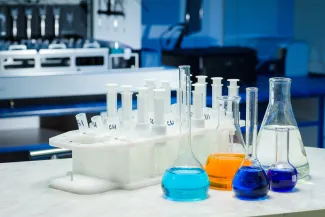
© iStock - posonsky - 1310166610
An important next step is to understand the exact mechanisms of these gut bacterial battles that prevent infection."It's possible that they won't be as effective as antibiotics and people will not want to switch. But I don't foresee large limitations, efficacy issues or scaling factors," Ronholm says.
Research suggests that probiotics, among other gut-enhancing products, may also ward off avian flu - a serious disease that affects both animals and humans. Probiotics appear to clear harmful microbes and repair inflammatory damage in later stages of the infection. However, an exact probiotic cocktail to protect against avian flu in all of its infectious stages requires further work, the researchers concluded.
Managing this issue of antibiotic resistance on farms, at its core, boils down to proper management practices and vaccination strategies on farms, Ganda says. "The cleaner [and] the healthier animals are, the less antibiotics we're going to need, the less antimicrobial resistance you're going to find," she says. For now, researchers like Ronholm and Ganda endeavor to create tailored and effective solutions that can be added into farm systems easily to protect animals from infection and mitigate the larger issue of antibiotic resistance. Other researchers are looking into viruses that kill harmful bacteria in animals and selective breeding to produce animals that are more resistant to infection.
However, the onus is ultimately on the industry to address their role in this growing global public health challenge, which is predicted to kill 10 million people annually by 2050. Whether new strategies such as targeted probiotics are incorporated on a large scale into farming practices is also up to the agricultural industry. Antibiotic resistance is becoming increasingly widespread in both humans and animals, and the cramped and unsanitary conditions on factory farms are clearly a systemic root of the problem.
Dawn Attride wrote this article for Sentient.

